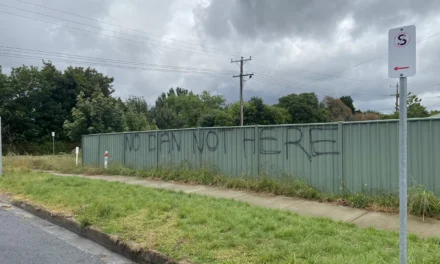The recent Community Satisfaction Survey results are a wakeup call for the challenges facing the Hepburn Shire.
The survey results showed that community dissatisfaction with the Council is high. The results from previous surveys have been very poor for many years and much lower than similar “Small Rural Councils” overall.
Despite the long run of poor results there has been little systematic analysis or discussion of the underlying reasons. Nor has there been much consideration of options for improving the experience and outcomes for the community.
It is important to get a clear and detailed understanding of the extent of the problems Hepburn Shire faces before considering what might be done.
At the outset it is worth noting that Council appears to be facing a series of underlying problems that have made it hard to improve its poor ratings.
Hepburn Shire has a dispersed population. Around 60% of residents (about 9000 people) are distributed across five main towns with the rest spread across smaller villages, hamlets and rural locations. This makes it difficult for Council to take advantage of economies of scale to provide the range of services the community expects.
There are multiple community structures and services across the Shire such as town halls, pools, libraries, senior citizens facilities, playgrounds and other community facilities. These services are easier to provide in nearby small councils such as Central Goldfields or Mount Alexander which have a single main town (Maryborough or Castelmaine).
Neither is this helped by cost shifting from State and Federal Governments which have pushed more and more responsibilities and requirements onto small rural Councils. Some of these responsibilities initially came with partial funding. For example libraries were once funded on a 50/50 basis but now are mostly funded by Councils. Similarly, the once shared costs for economic development and arts officers are now entirely Council responsibilities.
New services and responsibilities have raised community expectations at the same time as Hepburn Shire has progressively become less financially viable. An influx of tree-changers, from larger metropolitan areas has brought with it increased expectations of the range and quality of services which should be provided. This has not been helped by poor decision making by previous councils over projects like the Rex, but the financial challenges go much deeper.
Although Council has worked very hard over the past two years to engage the community in decision making it is clear from the community satisfaction results that their efforts have had negligible impact. Community satisfaction with council engagement remains low and in Birch ward, it has fallen significantly. The additional expenditure directed at the community engagement process has not borne fruit.
The Victorian Government has capped Council rates, but the cost of staff and materials have continued to rise and Council has been loaded with more responsibilities and much more onerous reporting requirements. For instance, town planning and health services involve much more resource requirements because of increasing State regulation. Small regional councils also have difficulty recruiting and retaining capable staff. They have salary scales which are lower than those for larger municipal councils so people with greater skills and experience are attracted to better paying jobs elsewhere.
Some of these issues, such as the dispersed population and the associated infrastructure costs, are fixed and unique characteristics of the Shire. They are not so much the underlying problem as factors that have to be taken into account in the way the Shire is organised, managed and funded. But other issues such staff capability, organisational culture and community engagement processes are within the Council’s control.
The recent Victorian parliamentary inquiry into the sustainability and operational challenges faced by rural and regional councils addressed a number of these problems. The inquiry recommended a new approach to funding, a reconsideration of Council responsibilities and functions, the pursuit of greater efficiencies and better management of community expectations.
The Victorian government supported some of these recommendations, but not the critical one to establish a specific funding program to address the population and infrastructure disadvantages of small rural shires. It is unclear the extent to which the State Government’s response has made much difference to Hepburn Shire’s underlying challenges. This leaves open the question of ‘Where to from here?’ for Hepburn Shire.
While it is clear the community is dissatisfied, the underlying causes and solutions are harder to pin down. Are the problems mainly a matter of improving the culture, competency and management of the Council. Is the problem that community has unrealistic expectations? Is the problem that the consultation and information processes aren’t working? Will some creative additional revenue options or better prioritising of functions fix the problems? Or are the issues more fundamental and intractable?
Unpicking the problems and generating solutions is likely to require a thoughtful, independent review of the issues facing Council. In the meantime we welcome submissions and letters on these issues.
Related Stories:
Community Survey Rates Council Performance as Amongst the Worst
Council has Ramped up Community Engagement – But Has it Worked?











